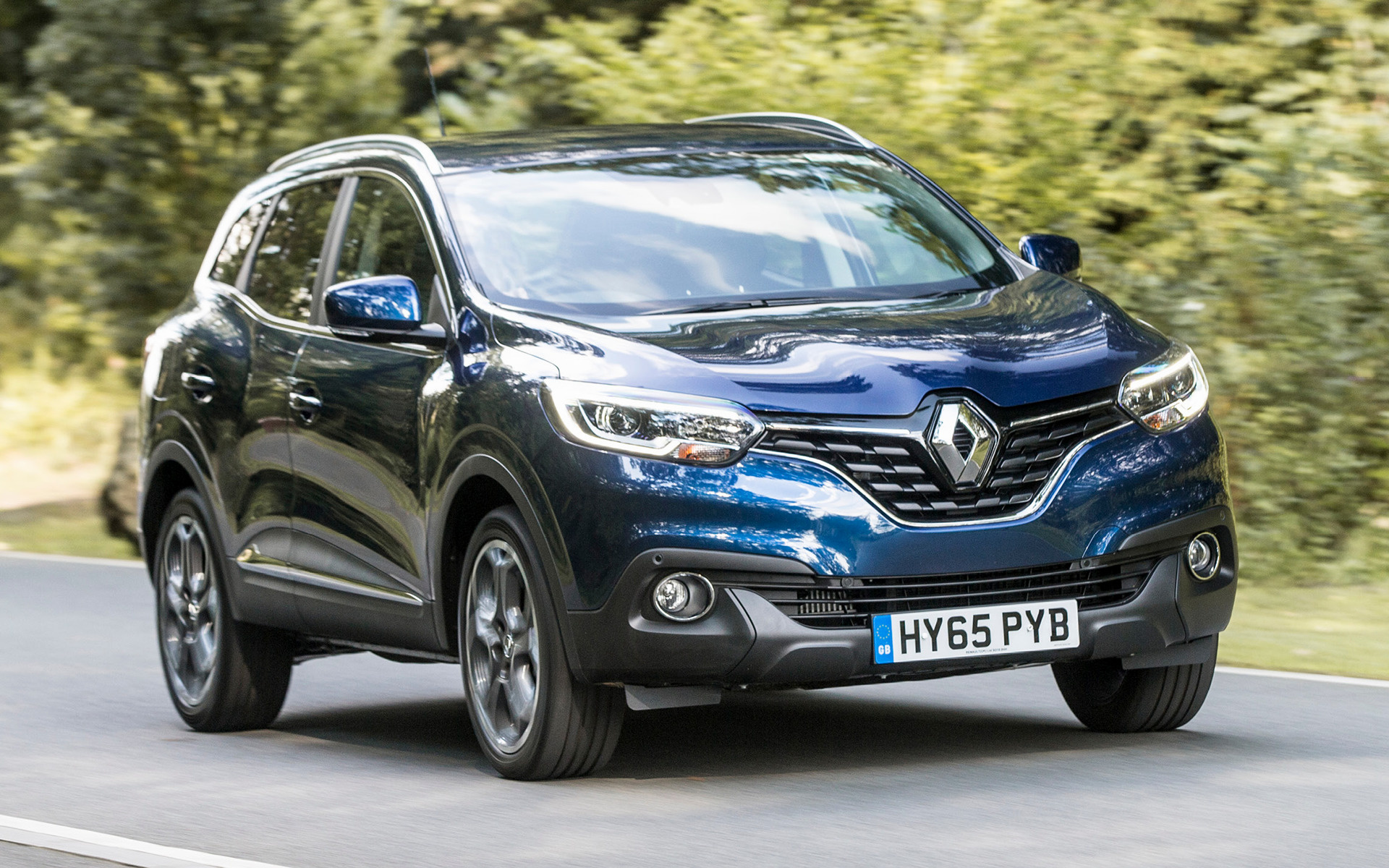The Qashqai – which has become a favourite family car – has donated many of its oily bits to this new SUV.
Renault has actually been in this sector before, with the Koleos, the company’s first attempt at an SUV. But that was agricultural and ungainly and proved about as popular as shingles, which is probably why you can’t remember it very well, if at all.
Fortunately, the Kadjar is a much more enticing proposition. Neatly styled, and with a handsome interior, it could be just the thing if you want a Qashqai with a dash of Gallic flair.
Here’s a list of pros and cons.
Space in the Renault Kadjar
Passengers shouldn’t have too many complaints about the space available inside the Kadjar – there’s plenty.
Both front- and rear-seat passengers are well catered for, and while the middle seat is best saved for children, a reasonably low floor means they shouldn’t be too cramped.
In the front, there’s ample leg, head and elbow room, although the positioning of the cup holders is a little daft – if you use them, it isn’t hard to catch your drink with your elbow.
Otherwise, there’s a good amount of storage, with a useful cubby hole for phones and other bits and bobs, and the boot is pretty big – larger than a Nissan Qashqai’s or Skoda Yeti’s, but smaller than that of the Mazda CX-5
There’s also a useful false floor that can be used to divide the boot – but don’t get too excited, because it only comes as standard on the top two models, and isn’t available at all on the entry-level Kadjar. Unfortunately, the same goes for the one-touch, easy-fold rear seats.
Comfort in the Renault Kadjar
The Kadjar is a reasonably comfortable beast. It can occasionally pitch and rock around through larger potholes, but for the most part, it’s smooth enough, and on the motorway, it settles down nicely. If you want the best comfort you can get, though, it’s worth specifying the 17-inch alloy wheels.
The seats, meanwhile, are supportive and offer lots of adjustment, making it easy to find a position that works for you.
Engine noise can be an issue in diesel-engined models, with tinny, clattery overtones at town speeds. This is a pity as the Kadjar is otherwise very quiet, with wind and road noise both kept at bay.
Dashboard Styling of the Renault Kadjar
There’s an instant feel-good factor when you climb aboard the Kadjar, thanks to the appealing-looking dashboard. It manages to look both classy and inviting at the same time.
What’s more, most of the switches and control knobs have a weighty, well-damped action. There are a couple of cheap-feeling bits of plastic floating about the place, but crucially, they aren’t in areas you’d normally touch.
The instruments are actually displayed on screens, which means they look crisp and are always clear and easy to read, with no glare to speak of. It’s a solid effort, then, let down by only a couple of glitches.
One is the cruise control switch, which is curiously located down by the driver’s elbow, meaning you have to take your eyes off the road to switch between cruise control and speed limiter modes.
The other is the touchscreen system, which is responsive enough and features attractive graphics, but has a menu system that occasionally feels a little cack-handed.
Driving Ease of the Renault Kadjar
If there’s one thing that lets the Kadjar down in this department, it’s the gearbox. You have to choose between a manual that has a long throw and a notchy action and a dual-clutch automatic that can feel a little ponderous at times.
Visibility is an issue, too, though not as much as it is in the Nissan Qashqai – you still get chunky bits of metal that are a struggle to see around, but at least there’s fractionally more visibility over your shoulder.
For all that, though, the controls are light and easy to operate, and the steering is well weighted, too, making driving a Kadjar smoothly a doddle.
For a tall car, the Kadjar is pretty enjoyable to drive. Sharp steering means it turns in eagerly, while well-sorted suspension means it doesn’t lean over as much as you’d expect.
There’s loads of grip, too, and as a result, the Kadjar is always confidence-inspiring through the bends.
It hasn’t quite got the lively, alert feeling you get with the Skoda Yeti, but given its purpose as a family car, the Kadjar is perfectly enjoyable enough.
Reliability of the Renault Kadjar
Renault’s warranty offering is four years, with mileage unlimited in the first two, and capped at 100,000 in the last two. That’s better than Ford’s, Nissan’s and Mazda’s, but Kia, Hyundai,Toyota and Ssangyong will all cover you for even longer.
The 1.5-litre diesel Qashqai returns an official average of 74.3mpg. That’s comparable with some of the best family hatchbacks and better than rivals such as the Skoda Yeti.
The 1.6 diesel and 1.2 petrol aren’t quite so efficient, and you’ll find it harder to get near the official figure in the petrol than you do in the diesels, simply because of the way you have to work it harder in everyday driving. However, the Kadjar betters the Nissan Qashqai when fitted with these same engines.
Safety in the Renault Kadjar
It should be a very safe car in a collision, and what’s more, it comes with systems to help you maintain control in an emergency and prevent skidding.
However, there’s one glaring omission from the spec sheet. Many rivals come with a system that will sense impending head-on collisions and apply the brakes to prevent them as standard on some if not all versions.
On the Kadjar, such a system is not only optional but only available on the top-of-the-range model. If you want any other version, you’ll have to do without.

